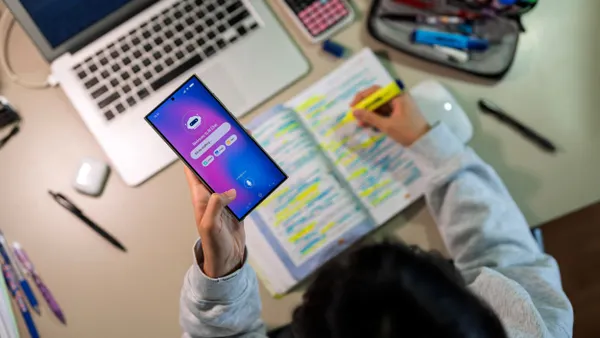Dive Brief:
- A recent analysis by MAPLE, the Massachusetts Personalized Learning Edtech Consortium, indicates that a lack of professional development is preventing teachers and principals in that state from fully taking advantage of personalized learning, District Administration reports.
- As a result of the lack of adequate PD and time to fully implement personalized learning strategies, teachers still tend to revert to traditional classroom practices that advance learning at a uniform pace, despite millions of dollars invested in technology for personalized approaches.
- While some whole-school personalized learning models have posted modest gains in student achievement, strong evidence for personalized learning has not yet been found and the model requires more research into the approaches that are most effective.
Dive Insight:
The Massachusetts Personalized Learning Edtech (MAPLE) Consortium recently released its "Landscape Analysis on Personalized Learning in Massachusetts” report, producing some interesting results regarding the state of personalized learning in one of the nation's highest-ranked states for education. While the study found that the biggest need for effective implementation of personalized learning is more time and funding for embedded professional development for teachers, the study also saw “gaps in technology readiness between schools that serve economically disadvantaged students and their more affluent peers."
Urban districts, for example, had only 12% of schools reporting enough devices to implement personalized approaches for all students.
While strong data on personalized learning has not yet been found, the idea has a strong hold on educational policy today. In 2016, K-12 school districts across the nation expected to spend approximately $10.2 billion on tech — much of it on personalized learning, which was the first priority for many school districts, according to the Center for Digital Education's (CDE) 2015 Digital School Districts Survey. Most educators know that students learn at different rates and in different ways, and new technologies are making it easier to accommodate those needs.
As Kenneth Klau, director of Digital Learning at Massachusetts Department of Elementary and Secondary Education said earlier this year, “If we distill the many definitions of personalized learning, we are usually left with at least two common elements: (a) students have a say in the learning process, and (b) students’ learning experiences are determined in part by their individual strengths and needs. Defined this way, there is much to like about personalized learning. Not only does it empower young learners; it prepares them for success in school and life.”
However, the new tools for personalized learning require a big learning curve on the part of teachers. For personalized learning to become an effective strategy, school administrators must make sure schools have the tools they need and the professional development to implement them. In many cases, this necessitates providing educators an equally personalized approach to PD.












